Do you own multiple brands or maybe you have multiple businesses and you want to try and work out how to run them with one Google workspace account?
In this video, I'm going to cover everything you need to know about how to make a great decision on how to structure your Google accounts running multiple businesses.
Did you find this video helpful? Let us know by dropping a comment below!
To learn more about our Cloud Support Service, or schedule an IT Systems Check, contact itGenius - the Google Workspace Experts
How to Run Two Companies in one Google Workspace Account
Now, we are talking about making sure you have your businesses configured correctly.
When you have more than one business, what usually happens when you're an entrepreneur and you want to scale and grow your business?
Well, you probably get excited and you want to start more businesses because that's what entrepreneurs do. Well, what tends to end up happening is business owners will come to us and they'll say,
Hey, Pete, you know, I've got these multiple domain names, I've got multiple businesses, and I don't know how to make them work, should I put them in one workspace account?
Should I put them in multiple workspace accounts, can I put them together at a later date, and can I pull them apart at a later date?
You can do both of those things, you can do all of those things. And what this decision comes down to is what the actual cost is now and the cost later down the line as well.
Now the first thing you need to understand inside of Google Workspace is the difference between alias domains and add-on domains.
Need help setting up your Google Workspace Account?
Click the button below and an itGenius consultant will be able to help you.
Alias Domains vs. Add-on Domains
Now an alias domain is basically where you have one primary domain. And let's say for us, it's itgenius.com. But we want to have an exit domain that works for all of our users. And so in our case, it's itgenius.com.au. And that domain is going to work for any of our email addresses for any of our staff.
And anytime I add a new user, it's just automatically going to show up and they're going to have that extra alias in there. Now, that effectively works, because it means that any users I create, they're automatically going to be assigned this new domain name
But everyone has to log in with the primary domain name, which in my case, is.com, everyone gets assigned a.com, you have to use that primary domain name the.com that I use just acts as an alias. Now, the add-on domains give you an extra little feature. And I like to call these buckets of email.
Buckets of Emails
Buckets are an extra bucket that you can have mail going into as a completely separate user account.
And if you would like your secondary domain to act as a second bucket and have users log into their own bucket using that secondary domain, that's the time when you want to use an add-on domain.
And so that additional domain basically gives you the option to have a completely different domain under the same Google workspace account.
What would be the reason that you would want to use this?
Well, if you're one business with multiple brands that would make sense to potentially use different buckets for different brands. So your team can email in and out using the different buckets.
Or it might make sense if you literally have two different businesses. But you've got people working across the different brands and across the different businesses, you might have one person who's doing sales for two businesses or doing customer service for two businesses or doing finance for two businesses.
Now before we get into when you should and when you shouldn't, I want to talk about some of the technical limitations of actually having multiple domains in one account because there are some limitations.
Technical Limitations
Calendar invites
Now one of those limitations is if you're using something like alias domains, your calendar invitations are only ever going to go out from the primary domain.
So when you send an email from a primary domain, or you invite someone to your calendar event, you can't use the secondary domain.
So that can be a little bit of a pain unless you're using the bucket system. When you use the bucket system, then you're going to be able to use a different domain name, and therefore it's going to have different calendar invitations.
Shared Drives
The other thing is when you have one Google account. If you share a shared drive outside your business, customers are going to see the business name next to those shared drives.
So you would have to choose a business name that is generic enough, which would make sense for your business if you are sharing shared files outside your business.
So that might be one reason that you want to do things completely separate outside of the domain in a completely separate Google account.
File Sharing
Google also does something really clever with its sharing, and that's basically anyone under one Google account has certain things shared with each other.
You're can have a company-wide policy to allow everyone read-only access to each other's calendars. Or you can have a company-wide policy to automatically share files or allow file sharing within the company.
You could even say any file that has link sharing enabled is automatically going to be shared with everyone inside the company. There are plenty of ways to have collaboration happen inside your business, even when you have multiple domain names running under one workspace account.
Now, the downside of that is if you have, for example, other people involved in your business, or you have quite large teams. It can turn into a little bit of a mess trying to have things that aren't linked once you've got everything linked and everything shared.
So if security is important between the different businesses and you want to make sure you have clearly defined sharing between the different businesses, you'd probably want to have them separate.
It might not make sense to have everything in the same basket there.
Cost implications
And next application to talk about is the cost implication. There are cost impacts, whether you have one workspace account that you want to split out and separate into two, or if you have two workspace accounts that you want to combine and merge into one.
Now both of these operations are possible without losing any data or emails, maintaining all of your user accounts, and all those kinds of things.
Those specialist migration services are what we do at itGenius day in and day out.
And so if you need help with that, actually making that happen with no lost emails, and without any flaws, then click on the button below and get in touch with our team.
Need help setting up your Google Workspace Account?
Click the button below and an itGenius consultant will be able to help you.
To learn more about our Cloud Support Service, or schedule an IT Systems Check, contact itGenius - the Google Workspace Experts




